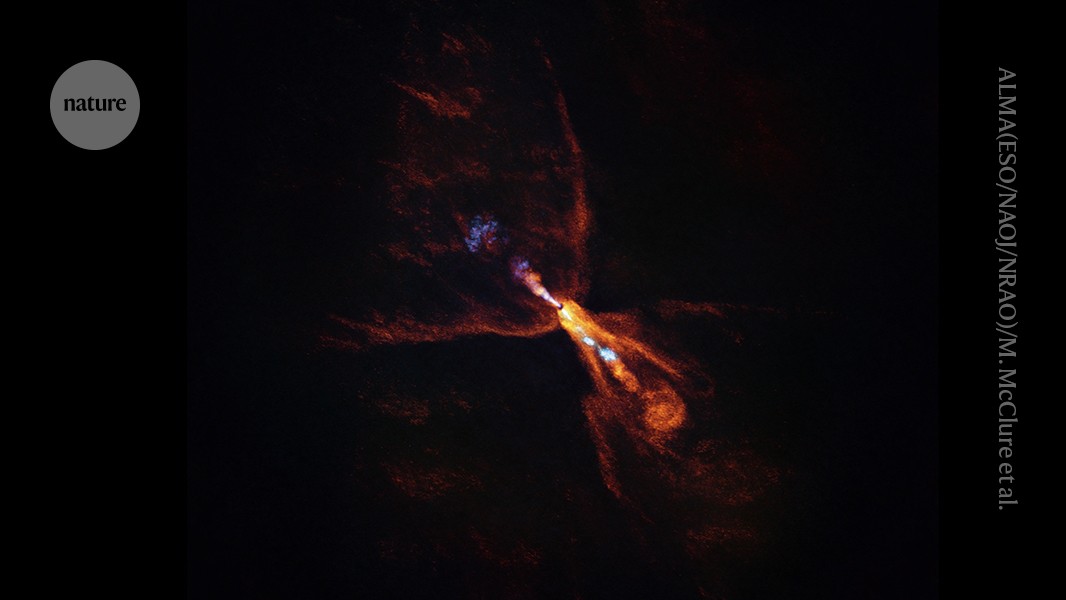Birth of a solar system caught ‘on camera’ for first time

Astronomers get rare glimpse of earliest stages of planet formation around a baby star
Astronomers have for the first time spotted a solar system beyond our own in its very earliest stages of formation. The research community has long sought such a system to help us understand the humble beginnings of our own. Using both ground- and space-based telescopes, the team zeroed in on the young star HOPS-315, 420 parsecs from Earth, at the start of a most exciting time: its planet-forming era.
The researchers report their discovery today in Nature1.
“What we’ve been trying to do is find a baby version of our Solar System somewhere else,” says Merel van’t Hoff, an astronomer at Purdue University in West Lafayette, Indiana, and a co-author of the study.
The team originally focused its attention on HOPS-315 after detecting crystalline silicate minerals around it — a tell-tale sign of early planet formation. (Planets form as mineral grains condense and then clump together in the hot disks of gas and dust swirling around newborn stars.)
Located in the Orion constellation, the baby, or protostar, also stood out because it was oriented such that astronomers could get a glimpse of its surrounding disk of gas and dust. This view is rare because jets of gas emitted by a newborn star, known as outflow, often block the hot disk from view, but HOPS-315’s was on full display.
This video describes how astronomers detected and interpreted chemical signatures from the HOPS-315 system. Credit: European Southern Observatory
The researchers used the James Webb Space Telescope to probe the chemical make-up of material around the star, and found the first-ever traces of warm silicon monoxide (SiO) in such a disk. They also noticed that the silicate minerals they detected were rich in SiO, and that the midsection of the star’s disk was ultra-hot.
Alongside additional observations from the Atacama Large Millimeter-submillimeter Array in Chile, these findings suggest that HOPS-315’s scorching midsection vaporized rock surrounding the star, and that the gas cooled and condensed into planet-forming minerals. “This hot mineral is the first feedstock that you have to start growing things in the disk,” says lead author Melissa McClure, an astronomer at Leiden University in the Netherlands.
Fresh insight
Login or create a free account to read this content
Gain free access to this article, as well as selected content from this journal and more on nature.com
or
Sign in or create an account Continue with Google
Continue with Google
doi: https://doi.org/10.1038/d41586-025-02245-y
Read the News & Views ‘The origin of the oldest solid objects in the Solar System’.
This story originally appeared on: Nature - Author:Jenna Ahart















